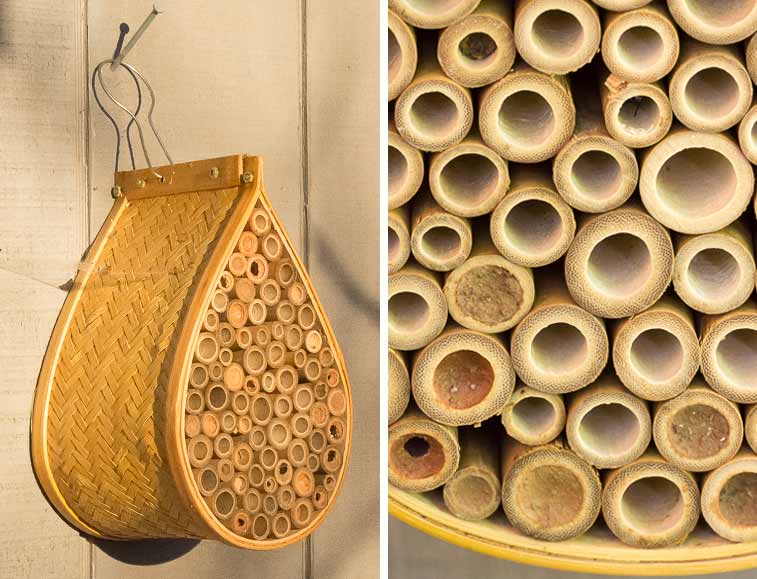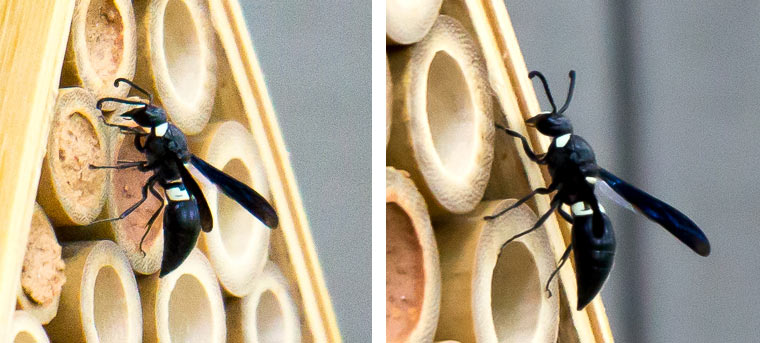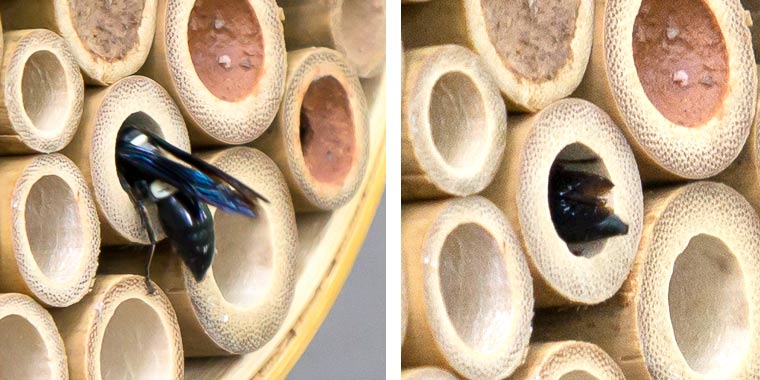Our thoughtful neighbors, Peggy and Jack, gave us this neat present last Christmas. It is a mason bee house. As you can see, it is a basketwork affair which is filled with hollow bamboo tubes. There are several species of bees and wasps that will use such a place to construct nests.
I hung the house on a nail outside our back door, and I have watched it all summer and fall. I did see one mason bee flying around the entrance to one of the tubes, but I don’t think any mason bees have made nests in the house. However, two species of wasp found it attractive, and they have built nests in some of the tubes. The tubes that are sealed with mud plugs on the end are completed nests.
The species shown here is the larger of the two. It is Monobia quadridens, the Black and White Potter Wasp. Other common names include Mason Wasp or Carpenter Wasp.
Monobia quadridens is a striking creature; it is large (about one inch long) and conspicuous with its bold black and white colors. Females of this species can sting, but they are not aggressive. Males have no stinger, but they will attack with the sharp point on the tip of their abdomen, and can cause a transient pain something like a prick with a needle. The top two photographs show males. Their heads have a large white spot in the middle of their “face”. Although the photographs here are not ideal, a bit of the white spot can be seen on close examination. Females are all black on the front of their heads.
I will write about the other wasp species that nested in the mason bee house in a subsequent post, and I will show some more pictures of the Black and White Potter Wasp at work.



